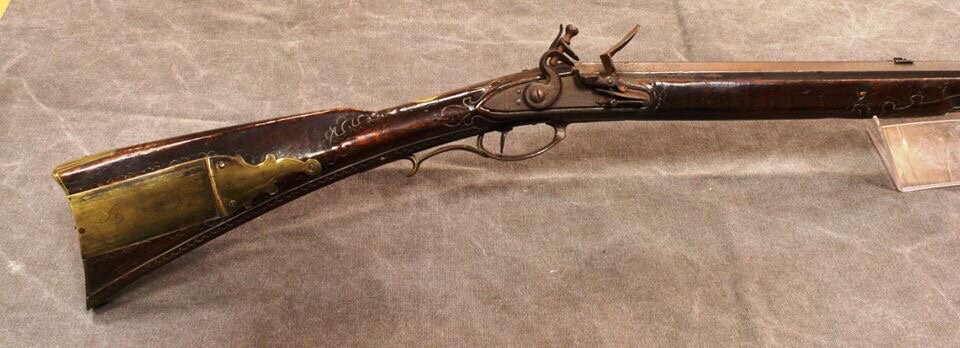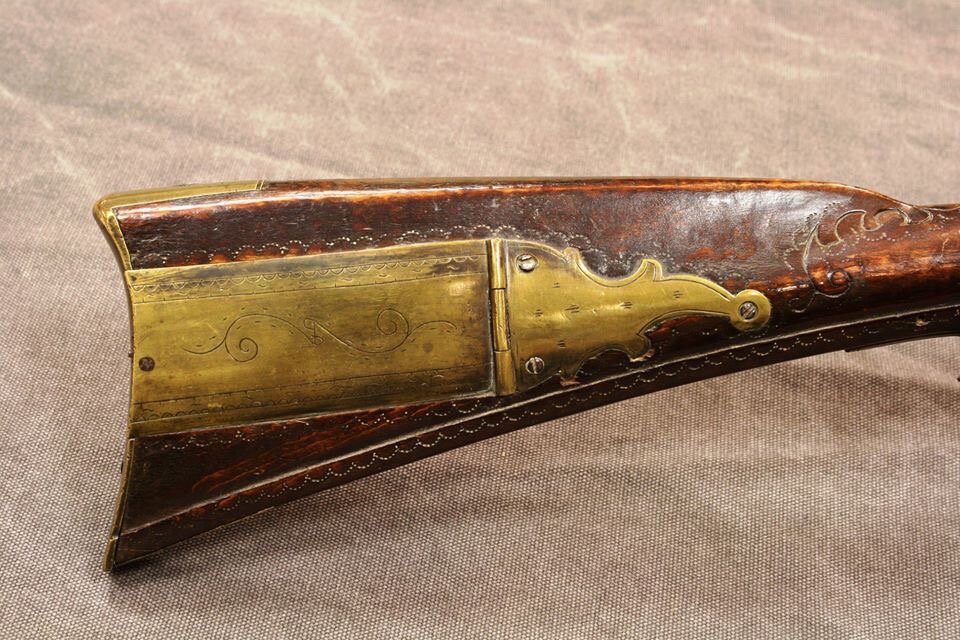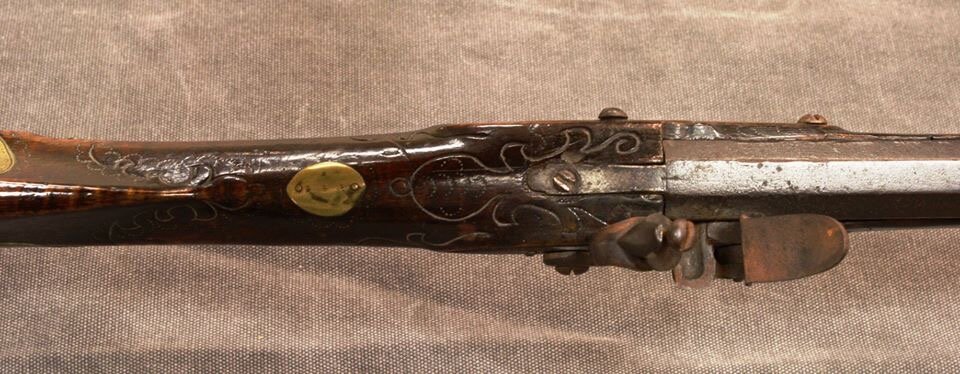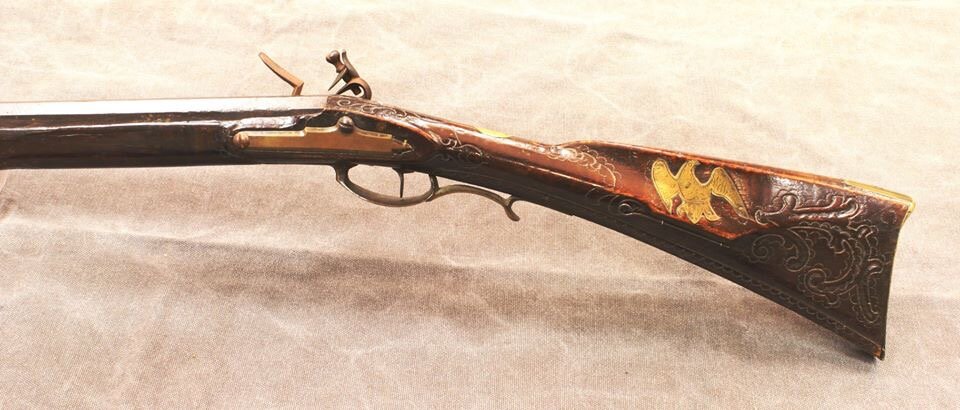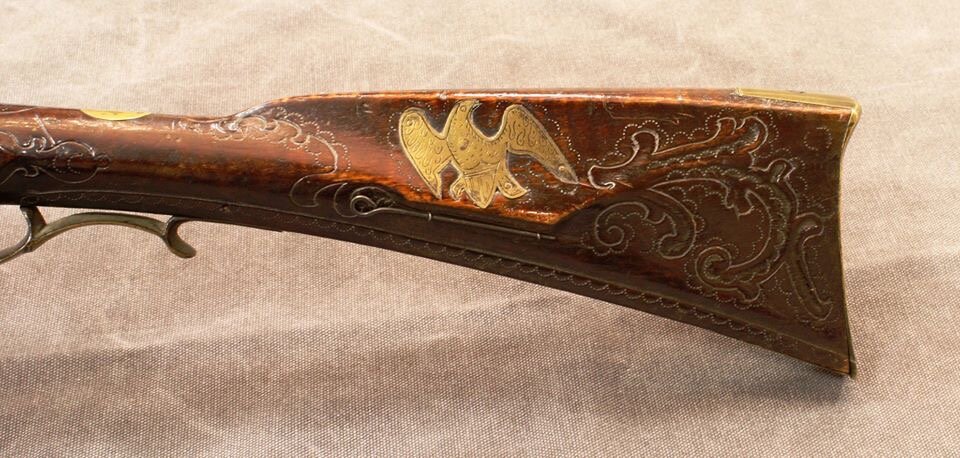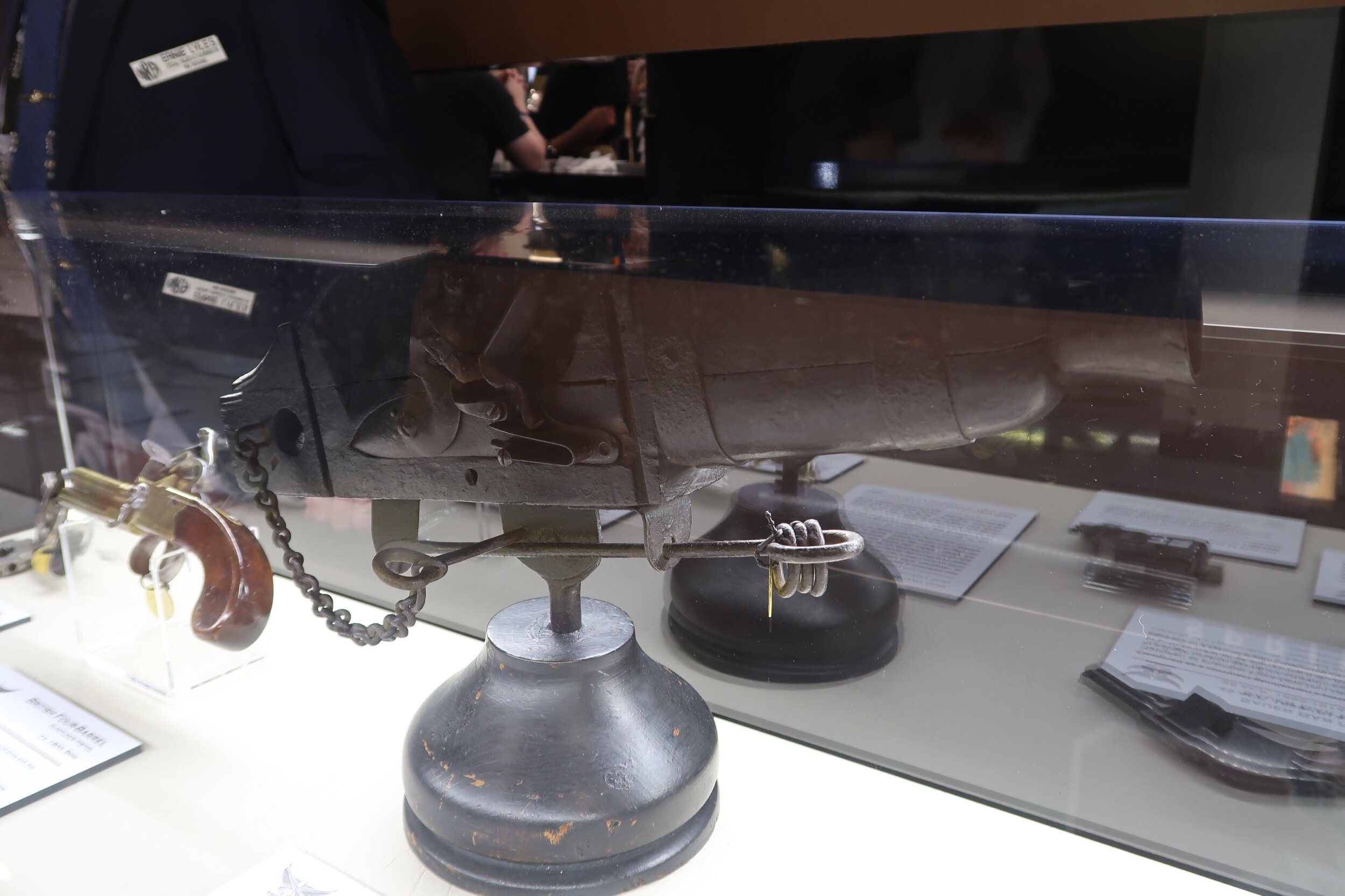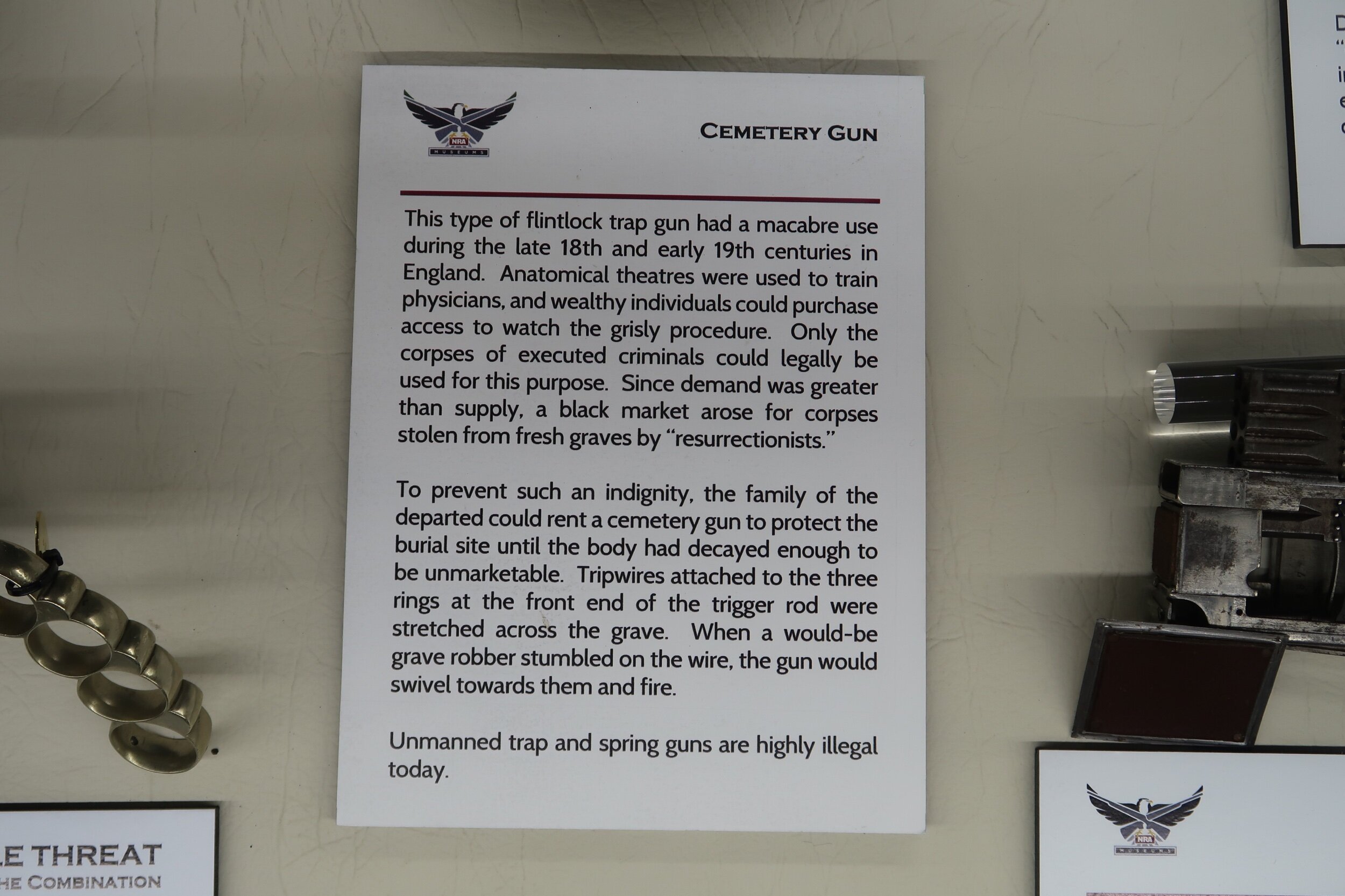Check out this video from Townsends to see what quarantine was like in the 18th century
Dodge's March by Mike Phifer
It was June 21, 1834, and the expedition was headed into what is now southwestern Oklahoma for the Pawnee Picts village. There they were to make a show of force and to meet with the Comanche, Kiowa, and the Pawnee Picts (this latter tribe was also called Taovayas and were a branch of the Wichitas) who had yet to make a treaty with the United States.
A Tale of Two Black Powder Remingtons
An original Jacob George | Kentucky Rifle Foundation
We’d like to thank the Kentucky Rifle Foundation for sharing this beautiful Jacob George rifle with us on facebook.
“Jacob George, 1793 to 1850, son of Henry George a gunsmith, both of Greenwich Township, Berks County, PA. This is a signed and dated rifle so look at the rifle and try to guess it's age before you read the date. This rifle a a great example of his work, probably one of the best. It's hard not to appreciate all the work that went into this example.”
Be sure to check out The Kentucky Rifle Foundation website for more of these great Kentucky Rifles.
Stars and Stripes Forever | Library of Congress Archives
A map of the encampments on Coxheath and Warley Common in 1778. American War of Independence (1775-83).
18th Century Bucksin Breeches Advertisement
This original advertisement was shared by Ron Malmgren in the “Just Frontier Trash 1750-1790” Facebook Group.
The Ad describes a pair of breeches made by Samual Penistone, in New Bird, Oxford, near Grovenor (Perhaps an early typo?) Square.
It states,
“It cannot be denied that LEATHER BREECHES (Especially Doe-Skin), are of all others most genteel, lite, and proper for traveling, hunting, shooting &c, but that Gentlemen who like breeches to fit neat and eafy, can seldom meet with this advantage in them, is too evident of late from their wearing a very inferior kind for these uses inconsistent. It is therefore for utility only, that I thus publicly declare myself perfectly qualified to serve Gentlemen ever to delicate or particular, every way so completely, that cannot fail of premoting the wear of leather breeches universial; as a proof of my abilities, any Gentleman may make a trial of a pair, and if in quality or workmanship can be excelled, or in fitting, do not equal silk stocking for safe and pleasure in wearing, they may be returned.
Un paralelled method is adopted by which gentlemen may keep their breeches clean without being leaft incommoded.
N.B. Leather perfectly white, black, beaver and cloth clours of the fiest qualities.
The best fair-stitch hands are wanted; but no other need apply, as the best prices are given. ”
Advertisments for lost watches as described in American Newspapers, 1770-1779
We’d like to thank Andrew W. Kirk for sharing this PDF file in the “Progressive Rev War Reenactors “ Face book group. Please join the group if you are interested, it is one of the best we have found in regards to Rev War Reenacting.
Original Fabric Samples from Fox Brothers, London - 1773
Originally shared by Gatti Napoleon Tailloring on Facebook, these photos share a detailed look at original fabric sample books from Fox brothers in London from 1773.
The truth about women followers of the British Military in the 18th century
Inventory of Goods available at the 1825 Rendezvous on Henry's Fork of the Green River
The First Concealed Carry Pistol | Muzzleloaders at the SHOT Show 2020
As part of our ongoing coverage of muzzleloaders at the 2020 SHOT Show, today we’re showing you a selection of muzzleloaders from the NRA “History of Concealed Carry” exhibit. I didn’t expect a small museum to be at the center of the show, but it was a welcome surprise in a sea of modern “tacticool” equipment.
The German Ball Butt Dag, Circa 1630
Touted as the “First concealed carry pistol”, I feel this would only be concealed in the bulky pants of the 1600s.
As stated by the museum placard, “The earliest firearms- hand cannons and matchlocks- relied on a slow burning match or other smoldering ember for ignition.
The Wheellock was the first mechanical lock, circa 1500. It allowed a gun to be carried with a wound spring, loaded and ready to fire. Some attribute this design to Leonardo Da Vinci.”
I mean, who doesn’t like wearing curtains to the court? Image Credit
A detail of the wheel lock mechanism, note the worn engraving on the wheel and lock plate.
The name sake featured in this photograph, “The Ball Butt” is carved with scrimshawed ivory or bone inlay
Note the face carved into the inlay around the tang, a common motif for the time.
Load Development for your Flintlock Squirrel Rifle | Black Powder TV
It’s Monday, which means Black Powder TV released a new video yesterday! This week, follow along as Bob begins developing a blackpowder load for his .36 caliber flintlock squirrel rifle. This rifle is built from a Kibler “Southern Mountain Rifle Kit”, one of the more popular DIY muzzleloader kits we see!
If you are interested in building your own kit muzzleloader, learning how to develop loads for your muzzleloader, or just want to enjoy some blackpowder fun vicariously, be sure to watch!
We are excited to be working with content creators like Black Powder TV and the Black Powder Maniac to promote not only the NMLRA, but our love for muzzleloading and living history so it may last for generations to come.
How to stop grave robbers in the 18th century
Happy #flintlockfriday! Here’s a look at a flintlock I’ve never seen before. This is an English “Cemetary gun”, used to keep grave robbers away from your newly deceased relatives during the height of medical “study” in Victorian England.
Mounted on a swivel, this beast of a muzzleloader would be tied to trip wires that, when tripped, swung the muzzle in the direction of the thief and sent a lovely lead gift their way.
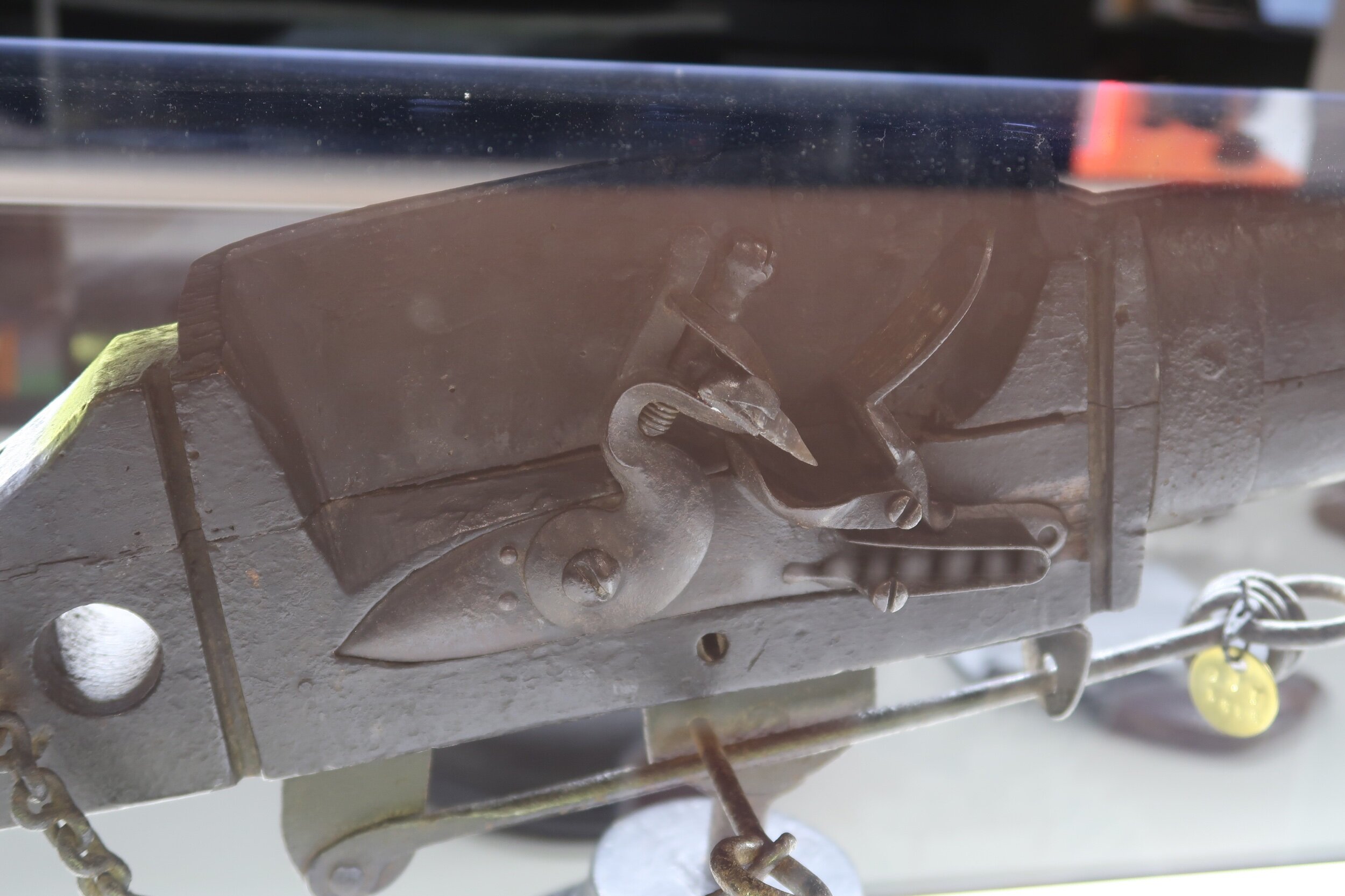

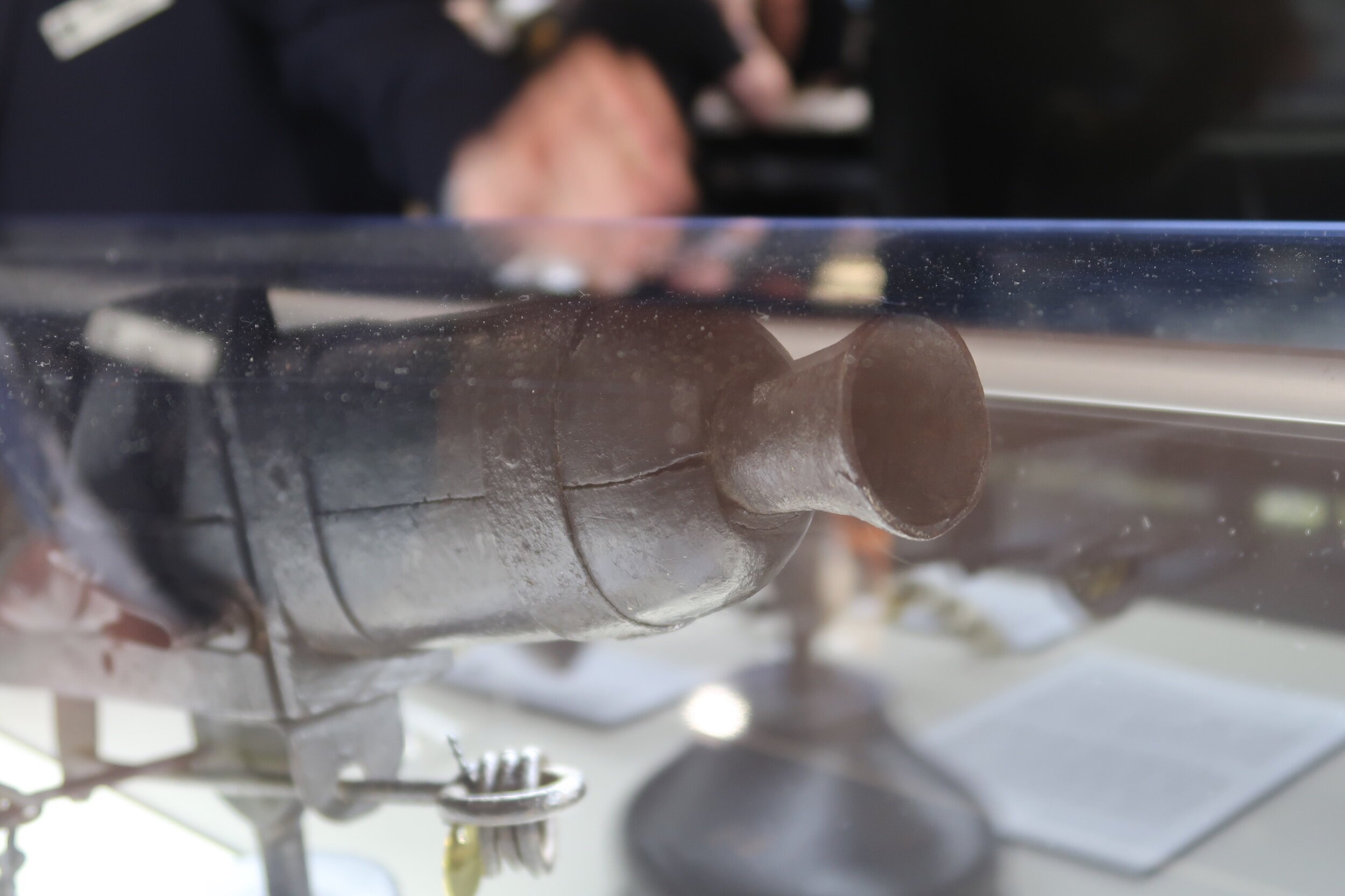

Samuel Linnell and the War of 1812 | An Excerpt
Muzzleloading Basics, an excerpt from Guns & Ammo Magazine
Our friends at Hodgdon Powder shared this great excerpt on muzzleloading basics from Author Dave Emary and Guns & Ammo Magazine.
“For all you muzzleloader hunters headed out this season, be sure to check out January’s issue of Guns & Ammo Magazine for a nice write-up on our GOEX black powders and Pyrodex and TripleSeven substitutes from our good friend Dave Emary.”
Starting with blackpowder’s origin in China in the 9th century and continuing through modern black powder substitutes, author Dave Emary brings a comprehensive look at our beloved powder’s history.





